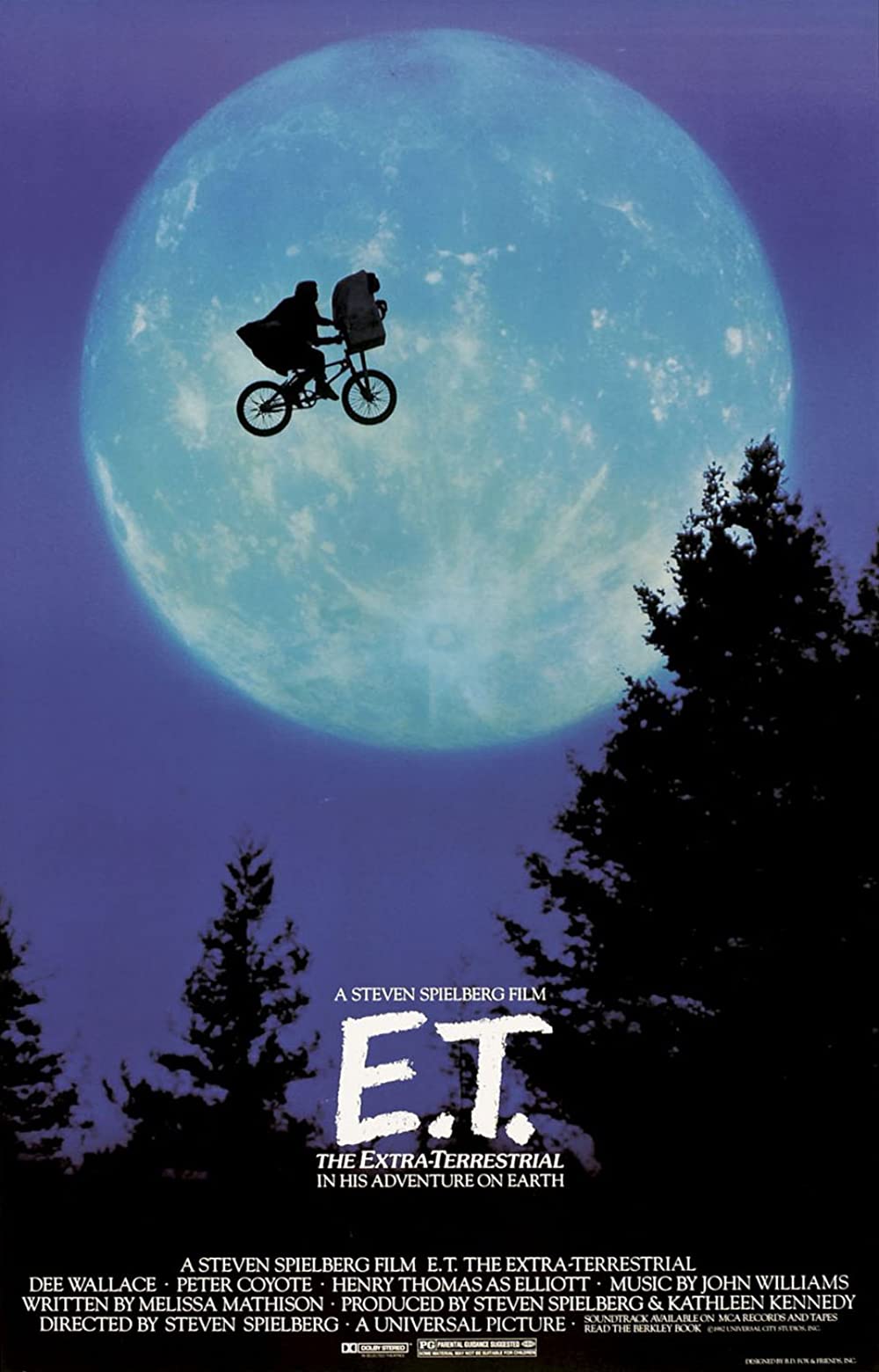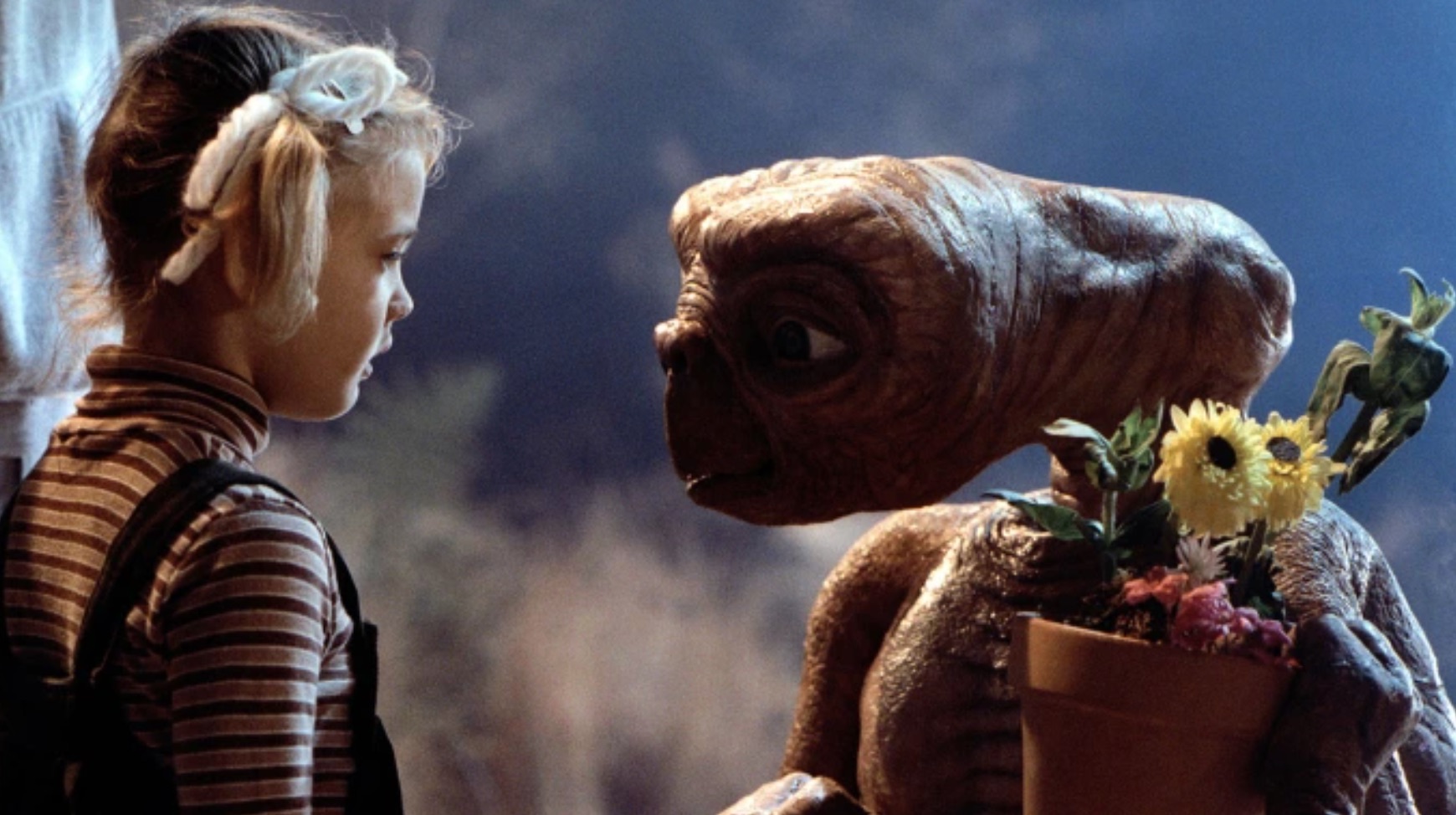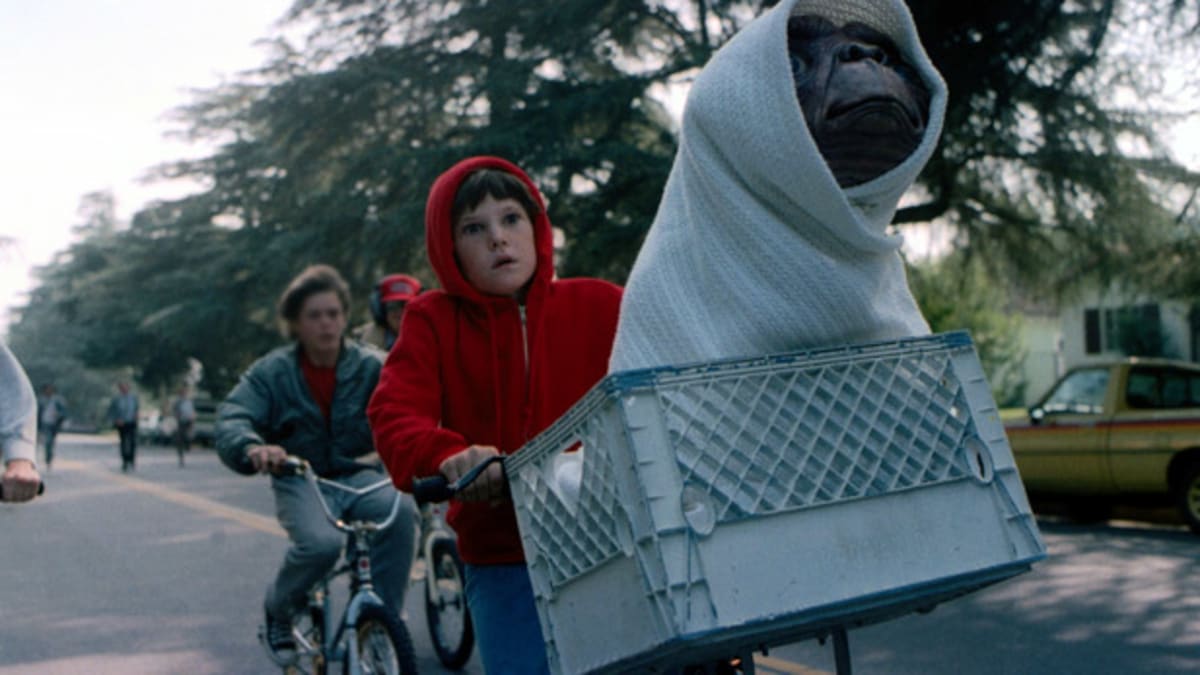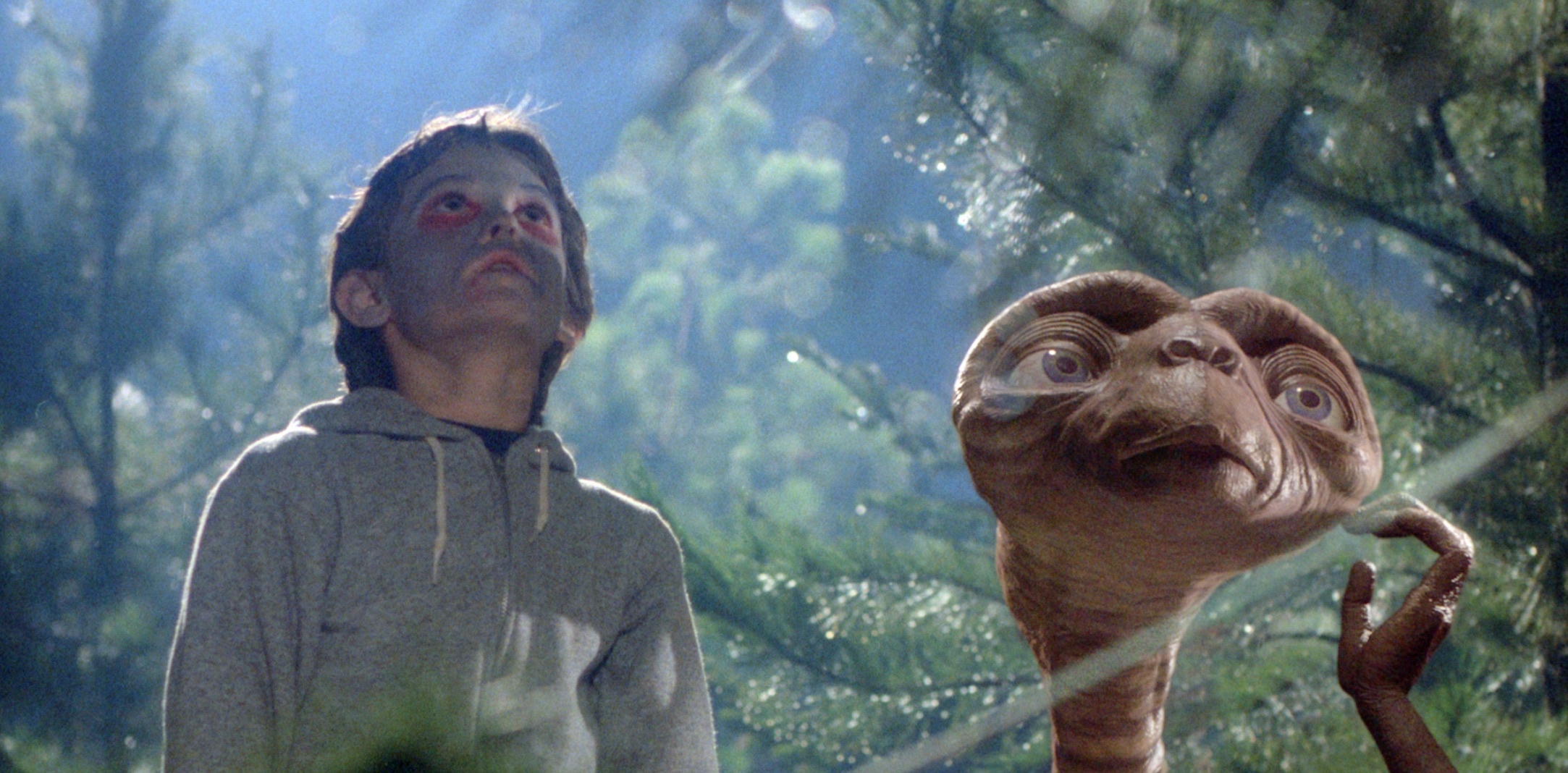'E.T. the Extra-Terrestrial' at 40: Spielberg’s charming sci-fi classic still offers wonder today

Director Steven Spielberg’s iconic sci-fi fable, "E.T. the Extra-Terrestrial," celebrated its 40th anniversary this month and you’d be hard-pressed to name another Hollywood movie that’s more universally beloved than this crowd-pleaser about a stranded alien and a young California boy who rescues and befriends it.
Originally released by Universal Pictures on June 10, 1982, "E.T. the Extra-Terrestrial" is that rare entertainment commodity whose appeal spans all ages, genders, and creeds. It speaks to elemental qualities in all of us and resonates in ways that provide a cathartic accessibility to its touching sci-fi story.
Starring Henry Thomas, Drew Barrymore, Robert MacNaughton, Dee Wallace, Peter Coyote, C. Thomas Howell, Seen Frye, and K.C Martell, "E.T." was a sensation straight out of the gate with its gentle tale of a friendly creature from outer space and a lonely boy named Elliott who helps him return to his own planet three million light-years away.

Budgeted at $10.5 million, "E.T." eventually collected a worldwide total of $619 million in its initial theatrical run, eclipsing Spielberg’s friend George Lucas’ sprawling space opera, "Star Wars." At the time it held the record for the longest continuous theatrical run at one year and also became the highest-grossing film in Hollywood history, and kept that coveted spot for 11 years until a little dinosaur movie from Spielberg called "Jurassic Park" supplanted it in 1993.
But the genesis of Spielberg’s classic movie was directly related to another of his sci-fi films from back in 1977, 'Close Encounters of the Third Kind." Taking the final first contact scene at Devil’s Tower as inspiration, Spielberg had a brainstorm that proposed the idea of what might happen if one of those innocent little aliens was stuck on Earth and how humanity would react.
Another germinating seed came from a scary "Close Encounters of the Third Kind" sequel script written in the late ‘70s by John Sayles titled "Dark Skies," in which sinister aliens terrorize a family at an isolated farmhouse, a plot strangely similar to M. Night Shyamalan’s "Signs" in 2002.

Taking a cue from Sayles’ screenplay, the lightened-up story for "E.T." was composed mostly while Spielberg was filming "Raiders of the Lost Ark" in late 1980 and early 1981. It was co-written by Melissa Mathison who took dictation from the visionary director on set and later became the wife of Harrison Ford.
Breaking space news, the latest updates on rocket launches, skywatching events and more!
On a personal note, "E.T." also continues Spielberg’s exploration of being a child of divorce after his own parents separated when he was nineteen. Elliott is emblematic of those childhood feelings of betrayal, confusion, and loneliness resulting from the devastating split.
“Originally my idea for "E.T." didn’t include an extraterrestrial,” Spielberg notes in the HBO docuseries, "Spielberg." “It was going to be about how a divorce affects childhood and how it really kind of traumatizes children. So the overriding theme was going to be about how do you fill the heart of a lonely child, and what extraordinary event would it take to fill Elliott’s heart after losing his dad? It would take something as extraordinary as an extraterrestrial coming into his life.”
Master musician John Williams wrote the endearing score which earned him a Best Original Score Oscar at the 1983 Academy Awards. Its sweeping theme music adds an uplifting emotional depth and spiritual connection to the children’s quest to get E.T. back to his home. The incredibly popular film also won for Best Visual Effects, Best Sound, and Best Sound Editing that year.

To bring "E.T." to life, Italian special effects artist Carlo Rambaldi created the short animatronic puppet, which was manipulated at different times by two very small stunt persons and a 12-year old boy born without legs. When it was completed, E.T. was able to elongate its neck and register a wide range of facial emotions. It was built in three months at the cost of $1.5 million from a combination of polyurethane, steel, and rubber with both electric and hydraulic controls.
"Star Wars" sound effects legend Ben Burtt chose a chain-smoking woman named Pat Welsh to deliver the main speaking voice of E.T., and her gravelly speech hit just the right notes for the Academy Award-winning technician.
Another "Star Wars" connection came in the form of acclaimed concept artist Ralph McQuarrie conjuring up the design for E.T.’s spaceship. McQuarrie was already well-known for his brilliant work on George Lucas’ 1977 space fantasy as well as designing the illuminated Mother Ship seen in Spielberg’s "Close Encounters of the Third Kind." The E.T. craft was patterned after fantastical Victorian-era machines in the works of French science fiction pioneer Jules Verne.
We’ve all heard about the terrible marketing blunder by Mars, Incorporated to deny the production the use of their M&Ms candy when Elliott leaves a trail for E.T,. but it’s worth mentioning once again. Mars believed E.T. would actually scare kids and didn’t want their product tarnished. So Spielberg’s team went to The Hershey Company and were granted the use of Reece’s Pieces, which skyrocketed the candy’s popularity, adding millions to their coffers.
Looking back, a case could be made that Peter Coyote’s crew of government agents with their guns (or flashlights if you watch the tweaked 20th Anniversary Edition) are simply doing their jobs to protect the planet from potentially harmful E.T. cooties that might eradicate humanity. In today’s fearful and paranoid world of viruses, things might have been received very differently.

The enduring affection for E.T is its timeless magic and compelling first contact story played out via the landscape of American suburbia. Empathy and compassion instilled in the plant-like E.T. speak to the highest potentials of Mankind and the lasting bonds of love and friendship.
Spielberg’s modern fairy tale reminds us that catalysts to extract the better angels of our nature can be found anywhere and anytime, even in a squat, home-phoning creature from another world marooned here on our Big Blue Marble.
As part of "E.T.’s" 40th anniversary celebration, Universal Pictures will re-release the film starting on August 12, 2022 in IMAX theaters around the country.
For more sci-fi classics check out our list of the best sci-fi movies of all time.

Jeff Spry is an award-winning screenwriter and veteran freelance journalist covering TV, movies, video games, books, and comics. His work has appeared at SYFY Wire, Inverse, Collider, Bleeding Cool and elsewhere. Jeff lives in beautiful Bend, Oregon amid the ponderosa pines, classic muscle cars, a crypt of collector horror comics, and two loyal English Setters.
